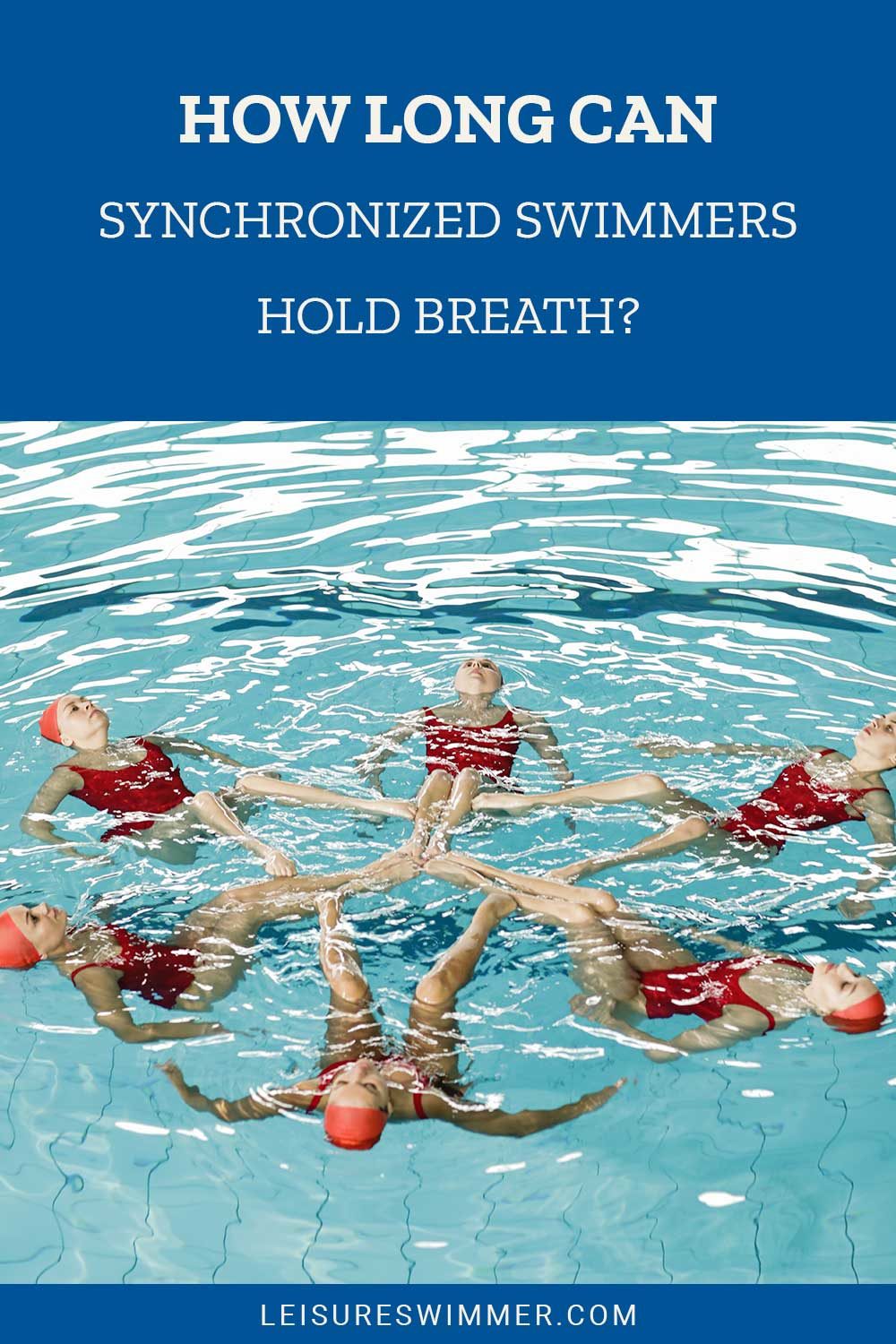How Long Can Synchronized Swimmers Hold Breath?
We may earn commissions for purchases made through links on our site. Learn more on our about us page.
The Summer Olympics is full of exciting events that get your blood pumping just from watching the athletes in action. However, synchronized swimming seems a little out of place when you think about it in that context because swimming is artistic and seemingly effortless.
However, many people overlook the impressive feats these swimmers pull off. For example, during a regular, 4-minute performance, many swimmers hold their breath for at least a minute and are usually under the water for 3 minutes.
Keep reading to learn more about the world of synchronized swimming and be amazed.

Is There Specific Training for it?
The short answer is yes. There is plenty of specific training that synchronized swimmers undergo to be able to perform these amazingly agile acts while underwater.
In fact, according to the United States Olympic & Paralympic Committee, synchronized swimmers practice more than any other team for any sport. They regularly practice between 6 and 10 hours a day for six days a week.
All these training hours are divided between training in the water and on land. Training regimes typically include pilates, weightlifting and strength conditioning, gymnastics, and dance, on top of practicing the routine performed in the water.

How Is It Possible to Be Out of Breath for So Long?
Being underwater and unable to breathe for so long seems like an impossible feat, but it can clearly be done, so how is it possible? The main reason synchronized swimmers can swim and be underwater for so long is their training.
Time spent in the water and rigorous workouts that involve plenty of aerobic and anaerobic respiration increases the capacity and tidal volume of the lungs.
This means that when they come up to breathe, swimmers can inhale more air at any given time than an average person, and their lungs can hold more air in general. Then, the body uses the held air until it is time to breathe again.
Is it Common for Them to Pass Out During Training?
Unfortunately, it is common for synchronized swimmers to pass out during training and even during performances.
Even though their bodies are conditioned to be able to handle low oxygen situations, slight mistiming during a program can cause them to lose consciousness while underwater because the body simply cannot tolerate some levels of oxygen scarcity.
Synchronized swimmers can also pass out simply from the intensity of their training, despite being on land and having plenty of oxygen. Given how long and how often they practice, this is likely because their body has little chance to recover in between practice sessions.
Does Holding Breath For So Long Damage Your Brain?
Holding your breath for so long can, unfortunately, pose a risk to your brain. If you were to faint underwater and be unable to breathe, it only takes a matter of minutes for permanent brain damage to be done.
That being said, most damage to the brain during synchronized swimming does not come from holding one’s breath. Instead, concussions are an incredibly frequent injury that synchronized swimmers experience because of the close-quarters flailing of limbs.
According to the US, about 25 percent of people who participate in the sport have reported experiencing a concussion. However, the true number is thought to be much higher because concussions often go unreported thanks to the sport’s “tough” culture.
Do Synchronized Swimmers wear Nose Plugs?
Most synchronized swimmers do wear nose plugs to prevent water from accidentally making its way up the nasal passages during all of the motions in the water. In addition, nose clips that shut the nostrils from the outside of the nose are also commonplace in this sport.
There doesn’t seem to be a regulation stating whether or not you need to use a nose plug or the kind of nose plug you need to use during the sport because there are individuals who don’t use one at all.
Three renowned synchronized swimmers manage to do just fine without a nose plug. Christina Jones, on the US synchronized swimming team, is one of these individuals, and she simply presses her lips against her nose to shut out water.
Final Thoughts on How Long Can Synchronized Swimmers Hold Breath
Synchronized swimming is a much more intense and brutal sport than most people imagine. However, the graceful nature and perfect coordination betray how much training goes on behind the scenes and everything these athletes must endure.
While swimmers often hold their breath for at least a minute, they can sometimes go longer at the risk of passing out and losing consciousness.
Even with a well-trained set of lungs, the danger is great, and it is not recommended for amateurs to attempt this in any capacity at home or in public pools, even with supervision.


